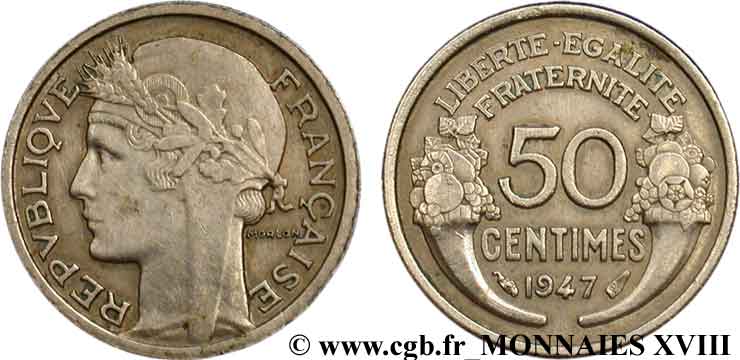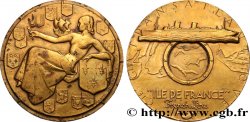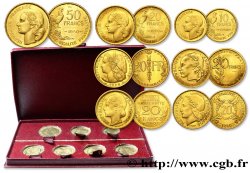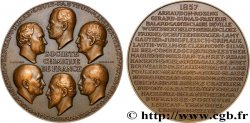v18_2352 - 50 centimes Morlon, variété de métal ou essai indéterminé 1947 F.192/19 var.
MONNAIES 18 (2003)
Startpreis : 180.00 €
Schätzung : 400.00 €
Erzielter Preis : 415.00 €
Anzahl der Gebote : 7
Höchstgebot : 451.00 €
Startpreis : 180.00 €
Schätzung : 400.00 €
Erzielter Preis : 415.00 €
Anzahl der Gebote : 7
Höchstgebot : 451.00 €
Type : 50 centimes Morlon, variété de métal ou essai indéterminé
Datum: 1947
Metall : Neusilber
Durchmesser : 18 mm
Stempelstellung : 6 h.
Gewicht : 2,47 g.
Rand lisse
Seltenheitsgrad : R3
Kommentare zum Erhaltungszustand:
Exemplaire brossé de façon agressive, la surface d’origine n’est plus distincte
N° im Nachschlagewerk :
Vorderseite
Titulatur der Vorderseite REPVBLIQVE - FRANÇAISE.
Beschreibung Vorderseite Buste de la République à gauche, coiffée du bonnet phrygien orné d’une cocarde sous couronne composite d’olivier, de chêne et de blé ; signé MORLON derrière.
Rückseite
Titulatur der Rückseite LIBERTE - EGALITE / FRATERNITE.
Beschreibung Rückseite 50 / CENTIMES / 1947 entre deux cornes d’abondance.
Kommentare
Cet exemplaire est apparemment frappé avec des coins d’origine, les différents sont bien nets et le poids, nettement au-dessus du poids d’un exemplaire en cupro-nickel (2,47 au lieu de 2,00 g) montrent qu’il ne s’agit pas d’un vulgaire placage. S’agit-il d’une frappe d’essai ou d’une fabrication non-officielle réalisée par un ouvrier “indélicat”, une “perruque” ? Aucun autre exemplaire ne semble en tous cas signalé avec des caractéristiques identiques. La pièce réagit à l’aimant et montre ainsi qu’elle possède au moins une partie importante de nickel.
This example is apparently struck with original dies, the differences are very clear and the weight, clearly above the weight of a cupro-nickel example (2.47 instead of 2.00 g) shows that it is not a common plating. Is it a test strike or an unofficial production carried out by an “unscrupulous” worker, a “wig”? In any case, no other example seems to be reported with identical characteristics. The coin reacts to the magnet and thus shows that it has at least a significant part of nickel
This example is apparently struck with original dies, the differences are very clear and the weight, clearly above the weight of a cupro-nickel example (2.47 instead of 2.00 g) shows that it is not a common plating. Is it a test strike or an unofficial production carried out by an “unscrupulous” worker, a “wig”? In any case, no other example seems to be reported with identical characteristics. The coin reacts to the magnet and thus shows that it has at least a significant part of nickel








 Berichten über einen Fehler
Berichten über einen Fehler Die Seite drucken
Die Seite drucken Teilen meiner Auswahl
Teilen meiner Auswahl Stellen Sie eine Frage
Stellen Sie eine Frage Einlieferung/Verkauf
Einlieferung/Verkauf
 Details
Details











